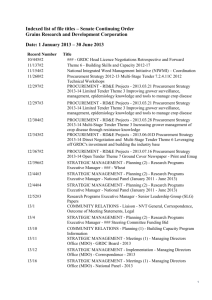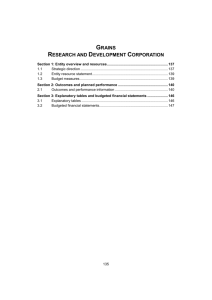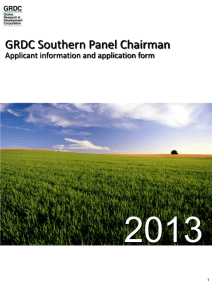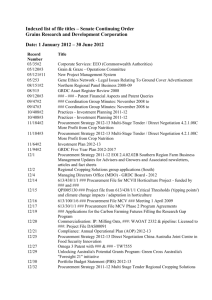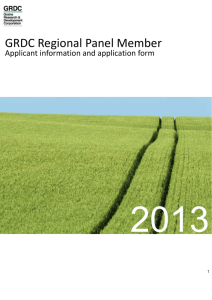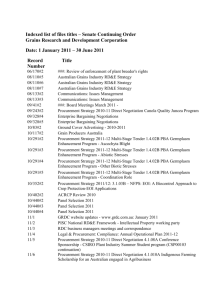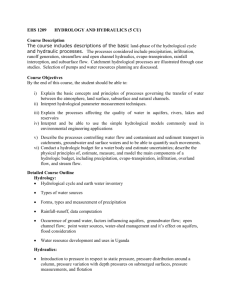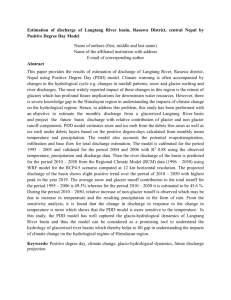the global runoff data centre (GRDC)
advertisement
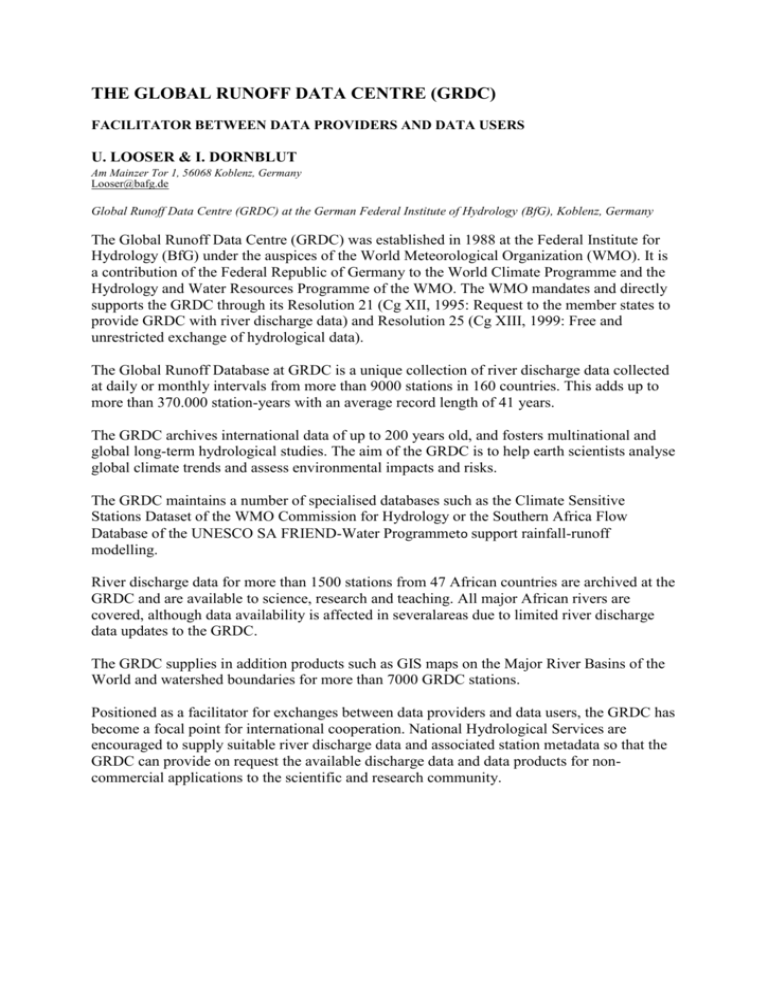
THE GLOBAL RUNOFF DATA CENTRE (GRDC) FACILITATOR BETWEEN DATA PROVIDERS AND DATA USERS U. LOOSER & I. DORNBLUT Am Mainzer Tor 1, 56068 Koblenz, Germany Looser@bafg.de Global Runoff Data Centre (GRDC) at the German Federal Institute of Hydrology (BfG), Koblenz, Germany The Global Runoff Data Centre (GRDC) was established in 1988 at the Federal Institute for Hydrology (BfG) under the auspices of the World Meteorological Organization (WMO). It is a contribution of the Federal Republic of Germany to the World Climate Programme and the Hydrology and Water Resources Programme of the WMO. The WMO mandates and directly supports the GRDC through its Resolution 21 (Cg XII, 1995: Request to the member states to provide GRDC with river discharge data) and Resolution 25 (Cg XIII, 1999: Free and unrestricted exchange of hydrological data). The Global Runoff Database at GRDC is a unique collection of river discharge data collected at daily or monthly intervals from more than 9000 stations in 160 countries. This adds up to more than 370.000 station-years with an average record length of 41 years. The GRDC archives international data of up to 200 years old, and fosters multinational and global long-term hydrological studies. The aim of the GRDC is to help earth scientists analyse global climate trends and assess environmental impacts and risks. The GRDC maintains a number of specialised databases such as the Climate Sensitive Stations Dataset of the WMO Commission for Hydrology or the Southern Africa Flow Database of the UNESCO SA FRIEND-Water Programmeto support rainfall-runoff modelling. River discharge data for more than 1500 stations from 47 African countries are archived at the GRDC and are available to science, research and teaching. All major African rivers are covered, although data availability is affected in severalareas due to limited river discharge data updates to the GRDC. The GRDC supplies in addition products such as GIS maps on the Major River Basins of the World and watershed boundaries for more than 7000 GRDC stations. Positioned as a facilitator for exchanges between data providers and data users, the GRDC has become a focal point for international cooperation. National Hydrological Services are encouraged to supply suitable river discharge data and associated station metadata so that the GRDC can provide on request the available discharge data and data products for noncommercial applications to the scientific and research community.
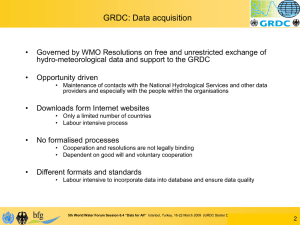
![GRDC - Travel Award Final Report Form [Word 103 KB]](http://s3.studylib.net/store/data/006960459_1-4d9834314a1cadd595d32e49951195ff-300x300.png)

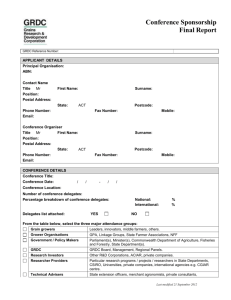
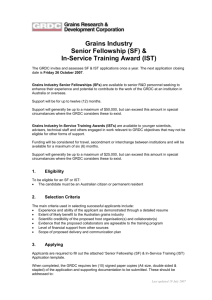
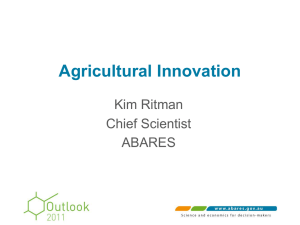
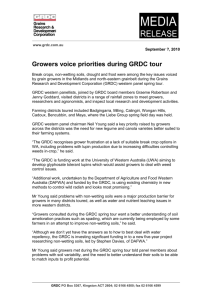
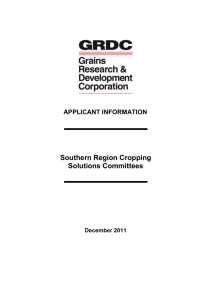
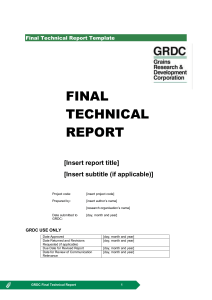
![GRDC - Instructions for completing Tender form [Word 78 KB]](http://s3.studylib.net/store/data/007290140_1-842ddda5bf3f0cef70a15623c3d5d5d3-300x300.png)
